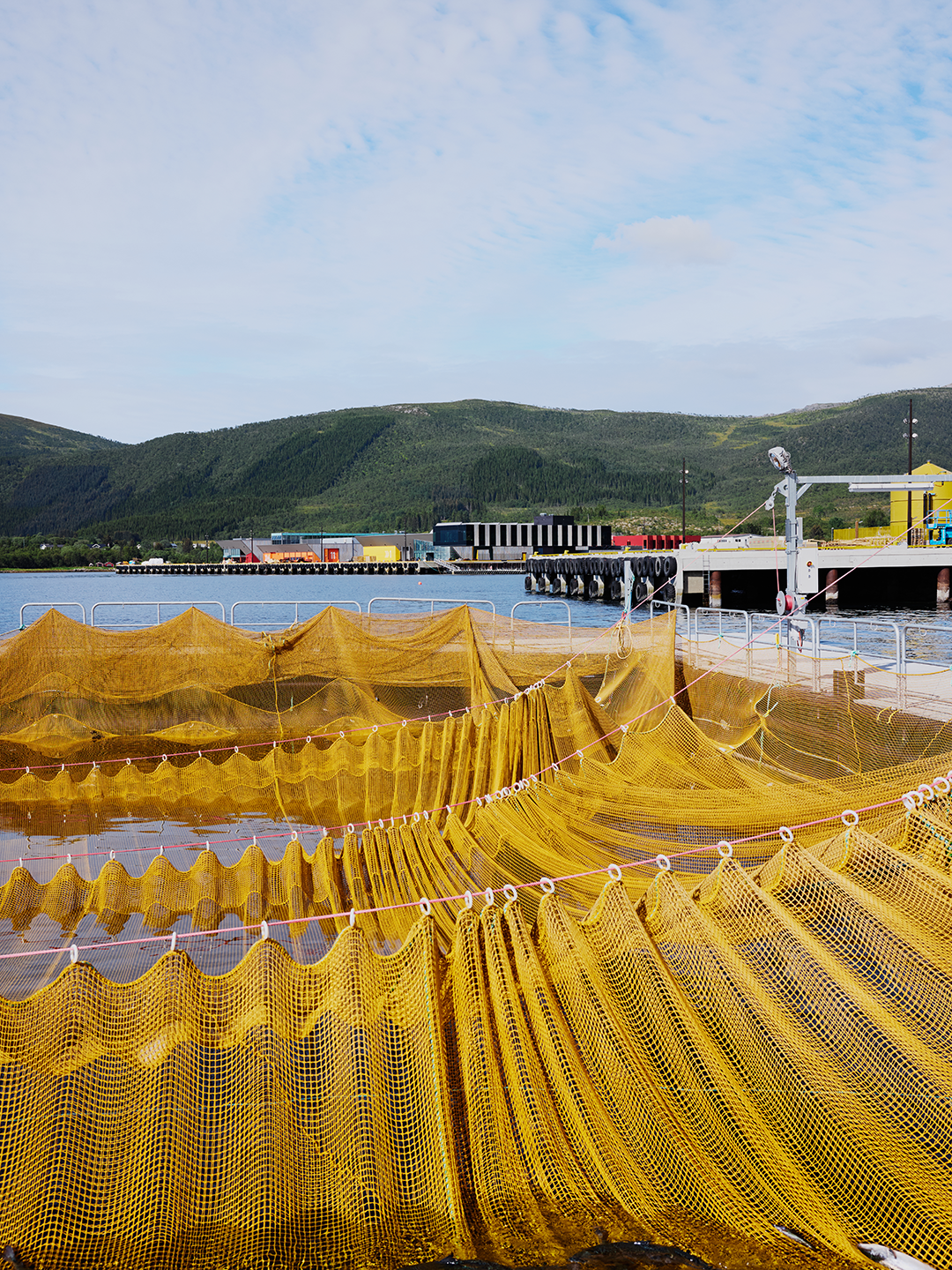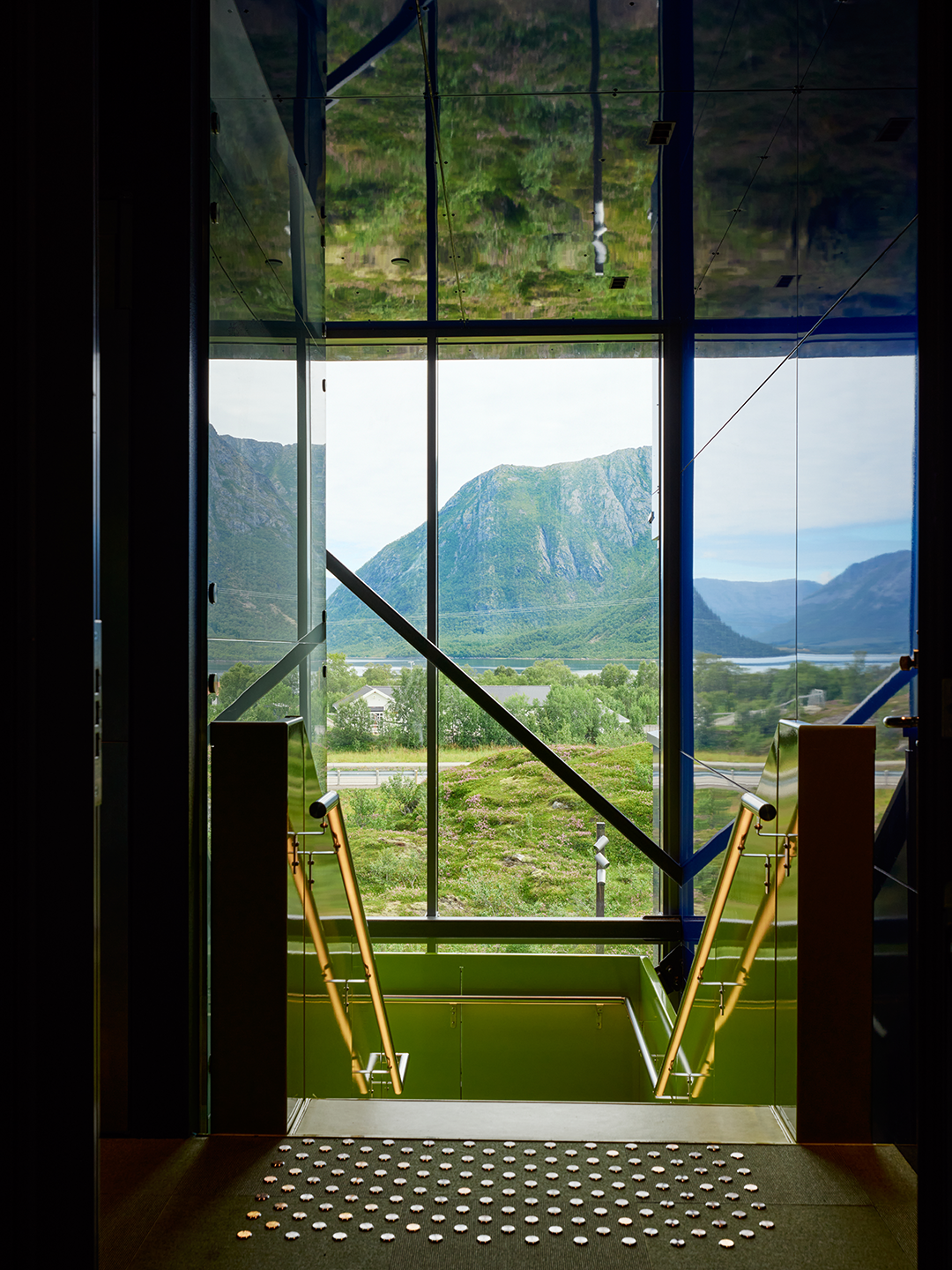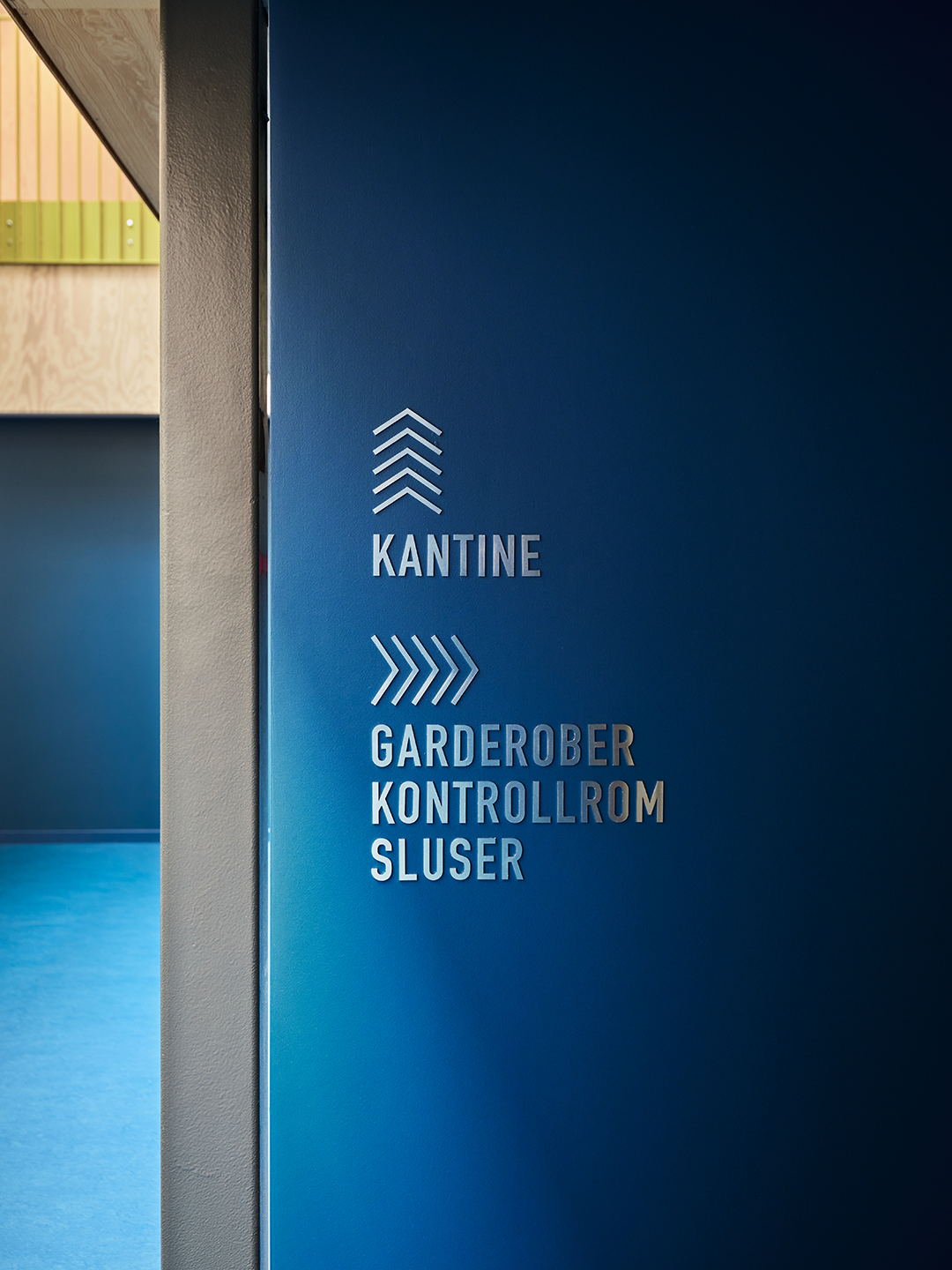
设计单位 Snøhetta
项目地点 挪威
建成时间 2024年
占地面积 16,000平方米
本文文字由设计单位提供。
Snøhetta与挪威知名渔业企业Holmøy Maritime已合作多年。在2014年至2021年间,Snøhetta为其设计了位于挪威韦斯特龙(Vesterålen)的总部空间,包括行政办公楼和一系列工业设施。近日,Snøhetta为其设计的扩建部分正式落成并投入使用。面积达16,000多平方米的新增建筑群落包含四个生产车间、一个仓库以及一个养殖池,每日可处理150吨鱼。
Snøhetta has designed a new extension to the colorful headquarters of Holmøy Maritime in Vesterålen. The facility, which houses four production halls, a storage space, and a tank farm, is over 16,000 square meters and designed to process 150 tonnes of fish in a day. Spanning over many years, the collaboration between Holmøy Maritime and Snøhetta include design of the company's administration premises and several industrial buildings constructed in the period between 2014-2021.




Snøhetta创始合伙人Kjetil Trædal Thorsen表示:“我们设计很多不同类型的项目,现代化而可持续的工业生产设施是我们一直希望探索的类型。Holmen渔场工业区对我们来说是很好的实践案例。我们很高兴可以为推动区域经济发展的企业,打造包容而温暖的工作场所。”


扩建部分围绕“transparency”(意为“透明”“公开”)理念展开,生产车间的大型窗户将自然光线引入室内,生产线也可供访客参观。
The new facility is located on the neighboring site at Liland outside Sortland in Northern Norway, and is characterized by transparency – both with large windows and natural light into the production halls, but also between the visitor and the production line at the facility.
周边的海湾铺设了数公里长的海水管道,这是因为整个渔场工业区使用海水、热交换器及热泵为建筑供热和制冷,而鱼类加工也需使用过滤海水。
Seawater is used to heat and cool the building, in combination with a heat exchanger and heat pump. Filtered seawater is also used in production, and several kilometres of seawater pipelines have been laid in the fjord just outside the plant.
扩建部分的施工历时两年,在约120名工作人员的共同参与下完成。
The construction of the entire facility was completed in two years, with around 120 operating at the construction site.


Holmøy Maritime首席执行官Knut R. Holmøy表示:“这次的扩建项目,我们依旧选择了Snøhetta。确保建筑设计整体性的同时,我们也希望能够赋予新设施空间独特的诠释。其中,最重要的是将生产过程透明化,利用大面积的玻璃立面为员工营造舒适的工作环境。
"We have continued to collaborate with Snøhetta as architect to create a separate identity for the building, and to ensure a holistic architecture. One of the main focuses of this building is to be able to show in a transparent way how production takes place, while at the same time creating pleasant and adapted workplaces for the employees with large glass surfaces," says CEO Knut R. Holmøy of Holmøy Maritime.
“我们很高兴与Snøhetta合作。他们对建筑、颜色、细节和施工有着专业而独特的见解,能够确保这个工业区既满足工业生产的需求,又能考虑到员工的身心健康。Snøhetta的设计解读是项目成功的关键所在,我们有目共睹。”
"The collaboration with Snøhetta gives us an unique opportunity to create something special. Their understanding of color, construction and architectural details ensures that our buildings are both functional and inspiring workplaces that promote well-being. Their ability to read the company's needs is important to us, and a design based on that has yielded results," says Holmøy.

Snøhetta项目负责人兼质量经理Nina M. Solsrud表示:“很感谢Holmøy Maritime对我们的信任,也很高兴能够参与他们企业发展中的新篇章。他们为当地社区带来了改变——通过全新的生产设施来投资当地社区,并在建筑设计中优先考虑员工。”
"Snøhetta is grateful for the trust we have been shown, and happy that we have been part of yet another chapter in the history of Holmøy Maritime. Holmøy really makes a difference as they choose to invest in the local community with this new production facility and prioritize architecture and the design of good workplaces for their employees," says Nina M. Solsrud, Snøhetta Project Lead and Quality Manager.
扩建的大部分空间都属于生产区域。鱼类从海里捕捞后会直接送到这里,经由四个大型生产车间加工处理。由于需要配置先进设备,对温度和洁净度也有严格要求,所以设计上先把生产设施规划好,再围绕车间安排其他具有辅助功能的设施,确保建筑内部的通道路线清晰,提供良好便捷的流线。
The production area takes up the majority of the volume. The fish is transported through four large industrial halls on its way from the sea. Because of advanced technical facilities and strict requirements for temperature and cleaning, the production facility was planned first, before the additional building with the supplementing functions was formed around it. This has ensured good flow with clear walkways in the building.


生产车间上层设有一条蜿蜒穿梭整座设施的玻璃走道,访客参观时能边走边观察车间的运作,学习和探索整个生产过程。车间另一侧设有大面积的玻璃窗户,室外辽阔的海景既呼应了渔业主题,也与室内的加工过程相映成趣。
On the floor above the production halls, a glassed walkway zig-zags through the building, giving visitors the chance to learn and explore the process by looking down into the production facilities. On the opposite side, facing the sea outside, windows provide both contrast and context to the processing that takes place inside the factory.


在扩建部分设计初期,业主便明确表明该设计应该优先考虑员工的身心健康。因此,员工和管理人员专用的区域采用开放式空间布局,设有大面积的玻璃立面和舒适的休息区。设施内装设了三个大型天窗,确保建筑内部的最深处也能有充足的自然采光。
It was clear from the start that the well-being of the employees should be prioritized when designing the industrial plant. Therefore, the employees' and management's premises are characterized by open spaces with glass surfaces, and good recreational areas. Three major skylights have been installed to ensure daylight even deep inside the large building.


建筑外立面采用三种主色调,室内空间则再加上另外三种颜色。外观以深蓝色为主,质感光滑的幕墙上映照出白云和大海,深蓝主调随日光微妙变化,与取自海岸线的土黄色和橙啡色形成反差。
Three main colors have been chosen for the exterior, and three more for the inside of the building. Outdoors, the main color is a deep blue that changes with the light and allows both clouds and the sea to be reflected in the glossy façade. The contrasting ochre yellow and brown-orange is taken from the shoreline.

室内的颜色沿通道区分。生产车间采用蓝色的卫生地板,上层的参观走道则灯光略暗,以暗蓝色和蓝绿色为主调,目的是配合下方明亮的生产空间,营造出适合访客从上方观察的环境。行政区域以绿色调配搭天然松木,食堂和员工休息区则是红色调配搭天然松木。
Indoors, the three colors follow the walkways of the building. The production halls have a blue hygiene floor. The sparsely lit viewing corridors in a dark blue and turquoise palette, provide a proper background for looking down into the bright lit production halls. The administration area is kept in a green and natural pine wood palette, while red tones and the same wood characterize the canteen and the employees' break areas.




生产车间与员工休息区的色调刻意营造出强烈对比。这样,每天都穿着工作服在工业强光下工作的员工在休息时,可以感受到明显的环境变化。休息区的暖色灯光氛围令车间和休息间的对比更为强烈。
Great contrasts have deliberately been created between the production halls and the break areas, so that the employees who wear work clothes and work in industrial lighting on a daily basis experience a significant change when taking breaks. A warm and close lighting contributes to this contrast.



Snøhetta所设计的导向标识含蓄却实用。贝壳和鱼骨图案除了用在对比标记和指示牌以外,也沿用到了品牌形象的叙事之中。字体设计与排印的灵感源自海事工业,采用紧凑的形态,部分地方使用与船运、船体相关的字体。
Snøhetta Design has created a subtle yet informative and functional wayfinding and signage concept imprinting both the inside and outside of the facility. Shells and fish bones have been used both in contrast marking and on signs, and these elements have then been taken further into the iconography. Typographically, inspiration came from the maritime and industrial sphere, with a tight and dense font. This has been supplemented in certain places with a stencil font associated with shipping and vessel markings.





完整项目信息
项目:挪威Holmen渔场工业区扩建
地点:挪威Sortlandssundet
年份:2019-2024
业主:Holmøy Maritime
类型:工作场所、工业生产
设计内容:建筑、室内建筑、景观建筑、平面设计
占地面积:16,000平方米
承包商:Sortland Entreprenør
咨询工程师(建筑、建筑物理、声学、通风):COWI
咨询工程师(消防):Firesafe
咨询工程师(电力):Sweco
咨询工程师(管道):Hinnstein
混凝土工程:Kai og Anlegg entreprenør
地基工程:OBSAS
电力安装:Elman
给排水:VVS installasjoner
通风:Hamstad
本文由Snøhetta授权有方发布。欢迎转发,禁止以有方编辑版本转载。
上一篇:长春净月中央公园 / 水石设计
下一篇:莫干山隐桥:迷人的“危险” / 泛式建筑+和作